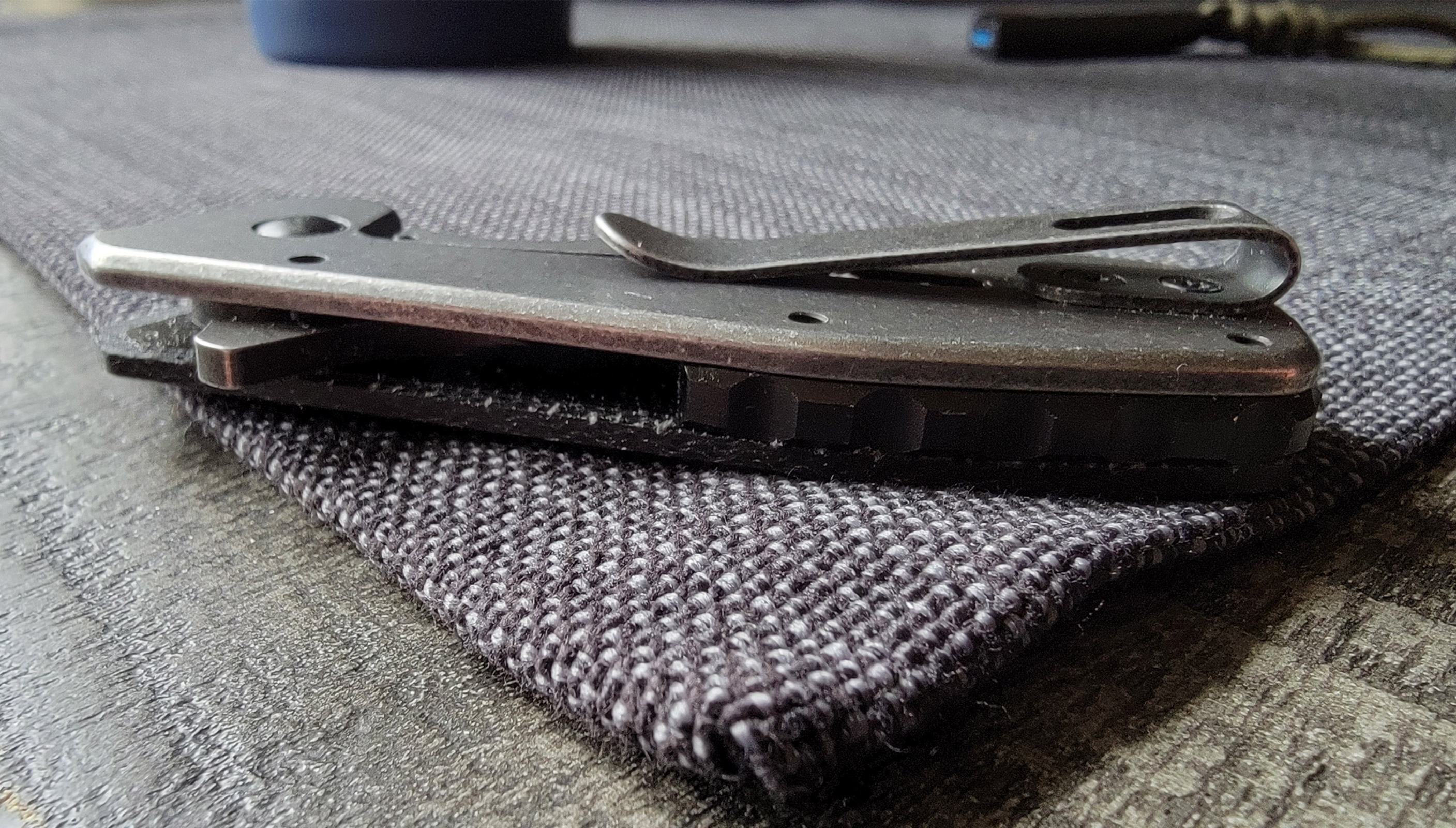New blade steel, new handle materials, and an upgraded design — see what we liked about CRKT’s utility winner, the Razelcliffe Compact Blackout Edition.
In a previous life, I worked for an employer who insisted that their crewmembers carry only safety boxcutters. I hated this, for several reasons: They’re ugly, disposable, and impractical to carry. Also, most folks I knew would simply tear through tape with the flimsy guard, rather than deploying the actual blade.
It was those bad old days that immediately sparked my interest in the CRKT Razelcliffe Compact. The company’s new Blackout version aspires to be everything a small workplace or outdoor knife should be. On paper, its size, lightweight nature, and unique shape offer a wealth of capability.
I spent several weeks testing its metal both on the job and in the woods. Here’s how it stacked up.
In short: The CRKT’s Razelcliffe Compact Blackout ($48) is a strong design, with a bit of room for refinement. The blade and handle shapes are well done, but the clip and opening mechanisms leave a bit to be desired. But as a small, utility-first tool, it makes for an interesting option.

CRKT Razelcliffe Compact Blackout Review
The name’s a bit of a mouthful, isn’t it? I’ll call it the Blackout from now on.
At $48, this new offering from CRKT has a lot going for it. Beyond the interesting design, the materials include D2 stainless steel on the blade, resin-infused fiber to go with more steel on the handle, and a matching stonewash all around.
Let’s examine these elements piece by piece, along with some impressions of the total package.
The Blade

The unique shape of the Razelcliffe’s blade is a marvel of utility. Reminiscent of a tanto or boxcutter, the straight lower edge is perfect for quick, clean cuts.
And see the upper edge, angling back from the tip? That’s sharpened too. This gives you not only a second cutting surface but also the ability to perform scraping tasks without sacrificing the integrity of your main blade. It’s a great option to have — in the woods or the warehouse.
On the kitchen front, well, its 2.14 inches come up a little short. You can tackle some light prep, but getting through an onion is going to be a frustrating affair. But for other at-home tasks like breaking down packaging? It’s a multi-angle menace.
The Handle
For such a small knife, the Blackout fills the hand quite well. Its rather bulbous aft section allows for a comfortable three-finger grip, with my thumb resting against the smooth top of the 0.11-inch-thick blade.
The cutout for the framelock is quite deep, allowing for an almost trigger-like feel for your index finger. Overall, the handle takes up 3.34 inches, bringing the total open length to 5.31 inches.

Originally, Razelcliffe Compact was offered in an all-steel handle configuration, but the half-and-half approach (resin fiber and stainless steel) utilized on the Blackout is far superior. Compared to the Razelcliffe Compact, the Razelcliffe Compact Blackout uses D2 steel for the blade instead of 8Cr13MoV.
As nice as the stonewash is on the lock side, the resin-infused fiber adds a touch of grip and warmth. Also, it sheds some of the weight that comes inherent to a full metal frame, tipping the scale at just 2.8 ounces.
The Downsides
As much as I love the utility of the blade, the opening process leaves a bit to be desired. Despite its large flipper tab, the weight of the steel itself is simply too low to build up momentum as it travels across the pivot.
Even the inclusion of the IKBS ball-bearing system isn’t enough to save it. I’ve loosened the pivot screw on mine, and it’s possible to get it to snap into a locked position with a single, solid press. But you have to think about what you’re doing, and that takes some of the fun out of it.
If ever a knife could have used an assist, this is it. The mechanism included on the much larger CRKT Squid XM would be perfect here, and I’m hoping to see it implemented in the future.
As it is, I’m not sure if it was a question of cost or engineering that kept the Razelcliffe as a strictly manual affair. But it’d be nice to see an upgraded version with a bit of spring in its step.
My other complaint lies in the pocket clip. While I enjoy its shape, color, and deep-carry ability, take a look at the way it’s affixed.

Because none of the components are recessed, that lip tends to catch on the top of your pocket. So, as with opening the blade, the process of tucking it away can sometimes be a two-step process.
Its raised nature also creates a bit of a hot spot while bearing down, though not as bad as some of its contemporaries.
Conclusion
Complaints aside, I still think the Razelcliffe Blackout is a solid utility knife. I’ve used it for multiple daily applications and don’t plan to stop anytime soon.
But where the Squid XM represented the peak potential of its design, I think there’s still opportunity for refinement in Jon Graham’s Razelcliffe Compact. A fine-tuning of the opening mechanism and the clip would go a long way.
Still, this is a solid offering from CRKT. If you’re looking for a small utility knife with a capital “U,” the Blackout is a good place to start.
The post Beyond the Boxcutter: CRKT Razelcliffe Compact Blackout Review appeared first on GearJunkie.

